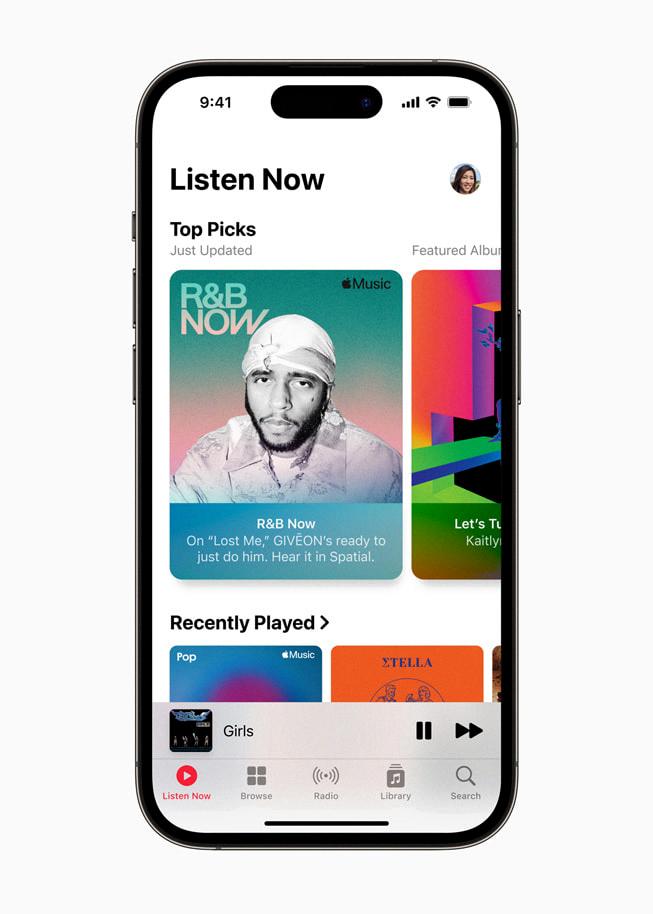Apple Music is a music streaming service offered by Apple Inc. It allows users to stream and download music from a large catalog of songs. In addition to providing an excellent music streaming experience, Apple Music has also emerged as a revenue-generating platform for artists and music labels.
Apple Music operates on a subscription-based revenue model, where users pay a monthly or annual fee to access the service. The revenue generated from these subscriptions is then distributed among the artists, music labels, and other stakeholders involved in the creation and distribution of music.
For every 1,000 streams, Apple Music pays artists about $6 to $10. However, this number can vary depending on various factors, such as the number of streams, the location of the listeners, and whether they use paid subscription plans or not.
It’s worth noting that Apple Music’s revenue model is not only beneficial for the artists but also for the company. In fact, Apple’s Services division, which includes Apple Music, is the fastest-growing company, contributing 6.4% to the total revenue.
According to a report by Business of Apps, Apple Music earned $4.1 billion in revenue in 2020. This significant revenue is a testament to the popularity of Apple Music and the success of its subscription-based revenue model.
One of the key advantages of Apple Music’s revenue model is that it provides a steady stream of income for artists and music labels. Unlike traditional music sales, where revenue is generated from one-time purchases, the subscription-based revenue model provides a recurring source of income.
Another advantage of the subscription-based revenue model is that it allows for a more equitable distribution of revenue among artists and labels. In the past, the music industry was dominated by a few large record labels, which would take a significant cut of the revenue generated by artists. However, with the rise of music streaming services like Apple Music, artists, and labels have more control over their revenue streams.
Apple Music’s subscription-based revenue model has been a game-changer for the music industry. It has provided a more equitable distribution of revenue for artists and labels, while also generating significant revenue for Apple. As the music industry continues to evolve, it’s likely that subscription-based revenue models like Apple Music will become even more prevalent.
Making Money on Apple Music
Making money on Apple Music works on the basis of streaming royalties. When users stream your music on Apple Music, you earn a portion of the revenue generated from their subscription fees. This revenue is divided among all the artists whose music is streamed on the platform, based on the number of streams their music receives.
The amount of money you earn per stream varies based on several factors, including the country where your listeners are located, the type of subscription plan they use, and the percentage of their subscription fee that goes towards streaming royalties. Typically, artists earn between $0.006 and $0.01 per stream on Apple Music, which means that for every 1,000 streams, they earn between $6 and $10.
It’s worth noting that these numbers are not set in stone and can vary depending on a range of factors. For example, if you have a larger fan base and your music is highly popular, you may receive a higher percentage of streaming royalties. Additionally, if more of your listeners are located in wealthier countries and use paid subscription plans, you may earn more money per stream.
Making money on Apple Music requires a combination of factors, including building a fan base, creating high-quality music, and promoting your work effectively to reach a wider audience. By doing these things, you can increase your chances of earning more money from streaming royalties on the platform.

Business Model of Apple Music
The business model of Apple Music is based on a subscription model. Customers pay a monthly fee to access the platform’s vast music library, which includes millions of songs from various genres and artists. The subscription fee is charged automatically on a monthly basis, and customers can cancel anytime they want.
Apple Music also offers a range of exclusive content, including radio shows, interviews, and live performances. The platform also provides personalized music recommendations based on user’s listening habits and preferences.
In addition to its subscription-based revenue, Apple Music generates revenue from advertising and partnerships with artists and labels. The platform has agreements with major record labels, allowing it to license its music for streaming, and it also offers a revenue-sharing model for independent artists.
Apple Music’s business model is centered around providing a high-quality music streaming experience for its subscribers, while also generating revenue through partnerships and advertising.
Does Apple Music Generate Profit?
Apple Music does generate profit for Apple. In fact, according to the company’s financial reports, Apple Music is one of the key contributors to the growth of its Services division, which is the fastest-growing division within the company. As of 2021, Apple Music contributes 6.4% to the total revenue of Apple’s Services division, which includes other services such as the App Store, Apple Pay, iCloud, and Apple TV+.
To put it into perspective, Apple’s Services division revenue has been steadily increasing over the years, with its revenue growing from $36.9 billion in 2018 to $68.4 billion in 2021. Apple Music has played a significant role in this growth, contributing to the division’s revenue increase year after year.
It’s safe to say that Apple Music is a profitable venture for Apple and is expected to continue to contribute to the company’s revenue growth in the future.
Revenue Generated by Apple Music
Apple Music generated revenue of $4.1 billion in the year 2020, according to a report by Business of Apps. This figure represents the amount of money earned by the music streaming service over the course of the year. It is worth noting that this revenue is separate from the profits that Apple Music may have made after accounting for expenses such as royalties for artists and operating costs. Nevertheless, the $4.1 billion figure is a significant indicator of the popularity and success of Apple Music as a platform for streaming music.
Conclusion
Apple Music’s revenue model revolves around a subscription-based business model, where users pay a monthly or annual fee in exchange for access to the platform’s music library. The amount of money artists earn per stream varies based on several factors, including the number of streams, the listener’s location, and their subscription plan. Apple Music’s contribution to Apple’s Services division has been steadily growing, with the platform earning $4.1 billion in 2020 alone. Apple Music’s revenue model has proven successful, providing a reliable source of income for both the platform and its artists.








